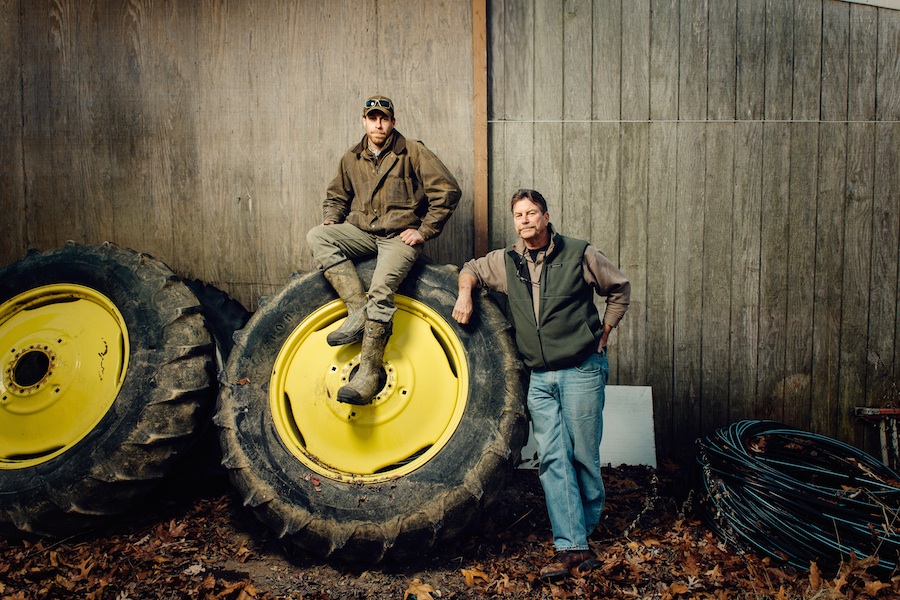“There are a lot of knowledgeable people,” says Alice Wise, viticulturist and education specialist at Cornell Cooperative Extension of Suffolk County since 1991, “vineyard managers who work seven days a week for months of the year. Steve Mudd helped plant half of the industry. His breadth of knowledge and experience is very helpful to new people, myself included.”
Steve Mudd would laugh at this. As wry and voluble as Wise carefully chooses her words, he’ll be the first to say, “No one makes more mistakes than us. How do you know what to do until you go out and screw it up?” Mudd’s recall of names and dates would make for an interesting evening, once the wine is flowing. But the stories about the people who had a hand in creating Long Island Wine Country will keep you past midnight laughing and having a good time.
Here’s one before we start. “Have you heard of the Heublein Auction?” he asks. “It’s a famous auction in Chicago where they auction off old wines. You know, Petrus, all those really old wines. I’m guessing it was ’78, ’79, and Chuck Mara (that’s M-A-R-A), who was from Rochester and owned a couple of big liquor stores, bought the most expensive bottle of wine, I don’t remember what it was, for $50,000. I knew these guys, because they’d fly into Mattituck with the winemaker who owned the Syracuse Stainless Steel Tank Company, look around for the afternoon and fly home. I asked him: ‘How can you justify spending that much?’ He said, ‘I get my name in the paper every day from being this crazy guy who spent $50,000 on a bottle of wine. All over the world. I couldn’t buy that much publicity.’ So he goes back home and puts the bottle in the window of his wine shop where everyone can see it and marvel at the fool who spent so much. Then one day he put the bottle up as part of a fund-raiser and everyone who bought tickets could have a sip of the wine. The night of the event, he tripped and fell and broke the bottle of wine! He got even bigger press for that. So I asked him: ‘It was bad, wasn’t it?’ Of course it was; it had spent time cooking in the window of a store. He broke it on purpose.”
Steve Mudd was meant to be in the airplane business like his father, David, who was a pilot, a pilot who married one of the singing McGuire Sisters and who planted peaches, hay and grain on his farm in Southold on the North Fork, where Mudd spent the bulk of his childhood. The hay they brought to a racetrack, Parr Meadows, which used to be in Yaphank, further west up the island, off the Long Island Expressway. “We’d take bales to the stables on race days,” he says, “to feed the horses.” They also had a profitable contract with a kosher bakery, to which they sold wheat and rye. “The rabbi would come out when we were planting, visit a few times a year,” he says. “And then we had to have the greens to the bakery before sundown on the day of harvest.”
Come around 1973, when Alex and Louisa Hargrave first planted vinifera grapes on Long Island to make wine, Mudd was 20 years old and fresh out of a job in aerospace technology in Miami due to the energy crisis, when Americans could only buy gas every other day depending on the last number on their license plates, odd or even. “My dad was sending me articles about the Hargraves that said there were beatniks coming to Long Island,” he says. “They were pretty comical, but my dad was interested. We got some plants on their order and, in 1974, planted one acre on the south side of the road—it’s now County Road 48—of sauvignon blanc, pinot noir, gewürztraminer, chardonnay, cabernet sauvignon and merlot.” That acre has since been ripped out, and the Mudds’ farmstead was demolished when the road was built. They planted again in 1975 on the north side of the road on the home farm’s 32 acres, this time putting in four acres of cabernet sauvignon, two acres of pinot noir and one acre of sauvignon blanc. “We plowed, put plastic on top like you do for strawberries and just stuck a cutting into the ground; they’re still there today.”
The unorthodoxy of it was that they didn’t graft the vines onto rootstock impervious to phylloxera, a mite that devastated European vineyards in the mid-19th century. Since then, grafting vinifera vines onto American rootstock has been a matter of course when planting a vineyard. “We had the great Dr. Nelson Shaulis, who was the director of viticulture for Cornell and developed the Geneva double curtain [a vine training system], make numerous trips down here, each time telling us it wouldn’t work.” But it has.
Excerpted from Behind the Bottle.
Photo credit: Matt Furman



